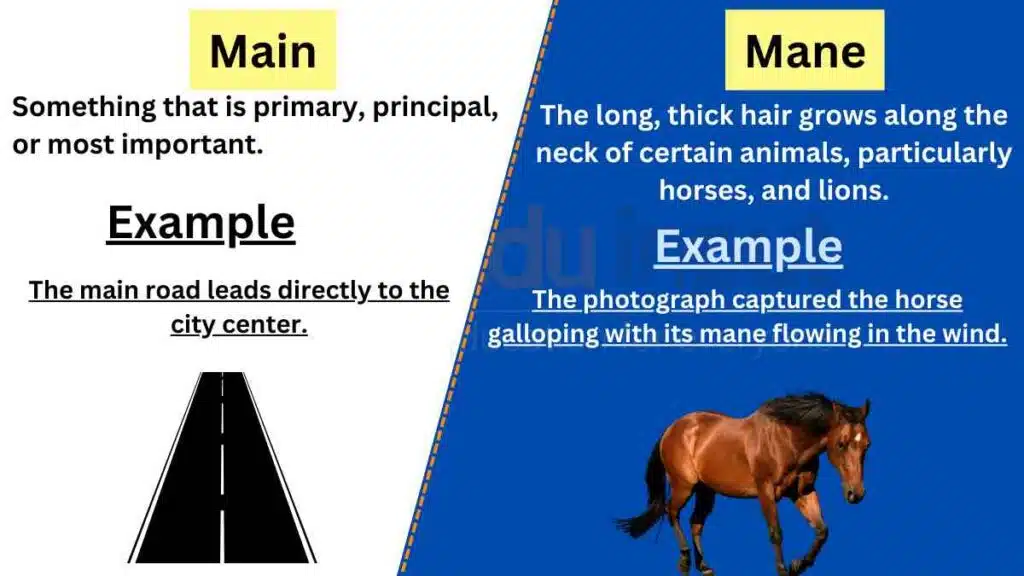Main vs Mane-Difference Between And Examples
In the English language, homophones are words that sound the same but have different meanings. One such pair is “main” and “mane.” While they may share the same pronunciation, their definitions, and usage diverge significantly.
This article aims to shed light on the distinctions between “main” and “mane,” providing clarity on their respective contexts and applications. By understanding their individual identities, we can communicate with accuracy and precision. Join us as we explore the contrasting realms of significance and appearance.

Meanings and Examples
Main Meaning
The meaning of “Main” refers to something that is primary, principal, or most important.
Main Examples
- “The main character in the story is a young detective.”
- “The main purpose of this meeting is to discuss the new project.”
- “The main road leads directly to the city center.”
Mane Meaning
The meaning of “Mane” refers to the long, thick hair that grows along the neck of certain animals, particularly horses and lions.
Mane Examples
- “The majestic lion proudly displayed its golden mane.”
- “She braided the horse’s mane before the riding competition.”
- “The photograph captured the horse galloping with its mane flowing in the wind.”
Difference Between Main And Mane
| Main | Mane | |
| Meaning | Primary, principal, most important | Long, thick hair on the neck of certain animals |
| Example | “The main character in the story is a young detective.” | “The majestic lion proudly displayed its golden mane.” |
| Usage | Significance, importance | Animal anatomy, descriptive of certain animal characteristics |
| Context | General discussions, hierarchy, prominence | Zoology, equine and feline references |
Usage in a Paragraph
The term “main” carries the connotation of being primary, principal, or most important. It is often used to describe something that holds a significant position within a group or context. For example, in literature, the main character refers to the central figure around whom the story revolves. Similarly, in a meeting or event, the main purpose denotes the primary objective or focus of the gathering. In everyday conversations, the term “main” finds utility in describing essential or fundamental aspects of various subjects.
Conversely, “mane” specifically refers to the long, thick hair that grows along the neck of certain animals, notably horses and lions. It is a distinctive feature that adds to the majestic appearance of these creatures. Lions, with their impressive manes, exemplify the grandeur and power associated with these animals. When discussing equine aesthetics, the term “mane” is often used to describe the grooming, styling, or braiding of a horse’s neck hair.
Although “main” and “mane” share the same pronunciation, their meanings and applications differ significantly. “Main” signifies something that is primary, principal, or of utmost importance within a given context. It is commonly employed to discuss hierarchy, significance, or prominence. On the other hand, “mane” refers specifically to the long, thick hair on the neck of certain animals, particularly horses and lions. It serves as an iconic characteristic, enhancing the visual appeal of these creatures. By distinguishing between these homophones, we can effectively communicate and avoid confusion when discussing matters of significance or animal anatomy.






Leave a Reply